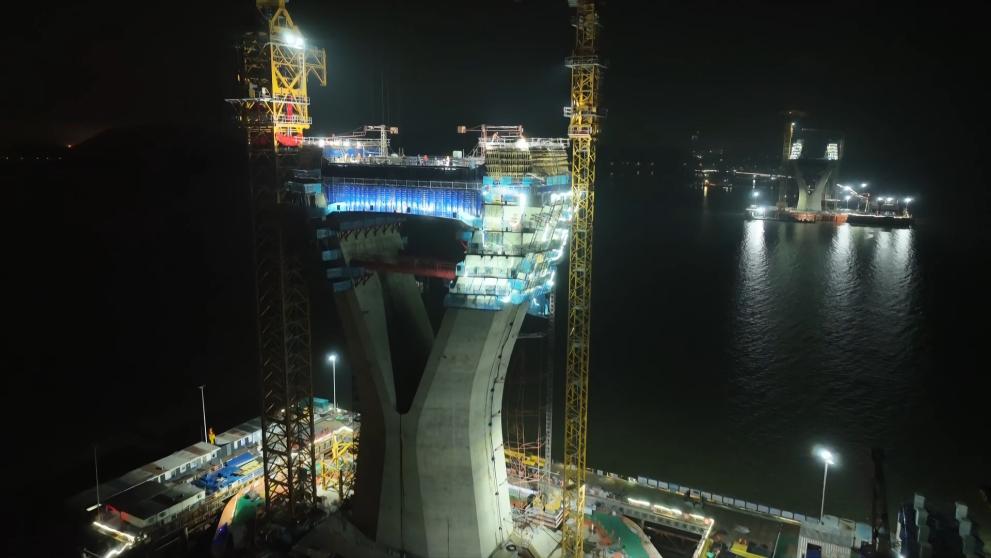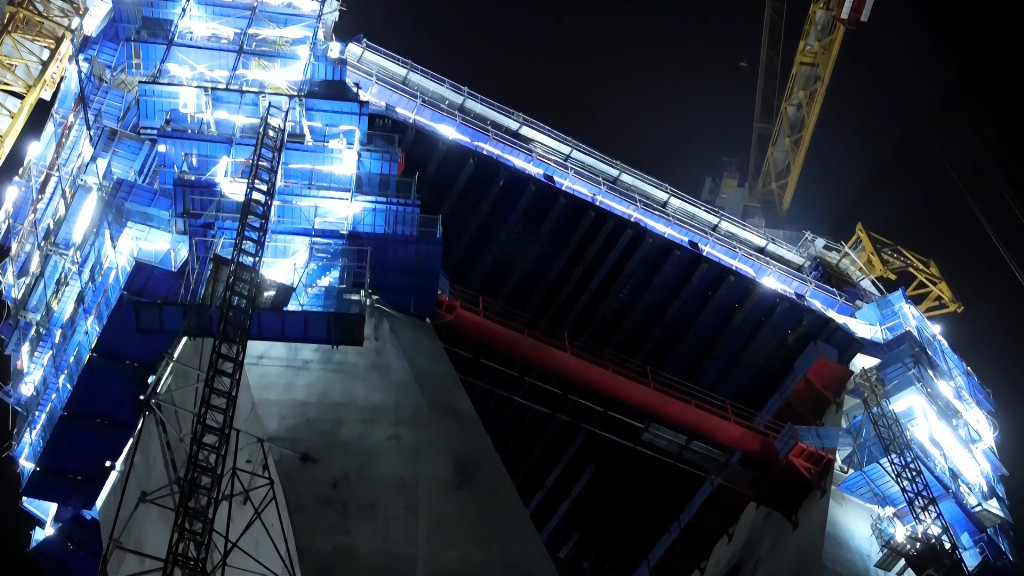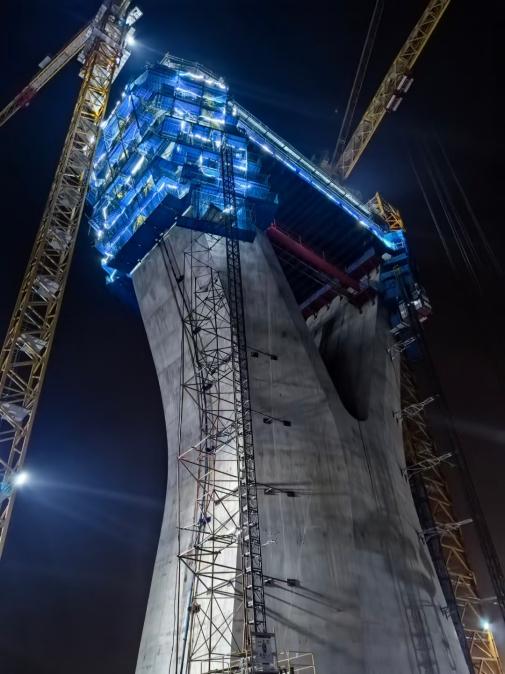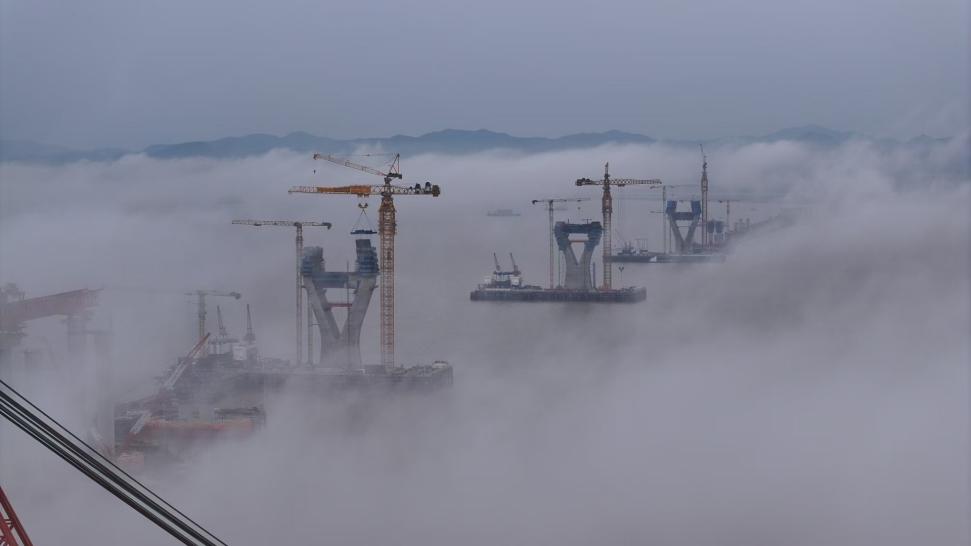Qinglongmen Bridge Superstructure Construction Begins
On April 21, the final concrete pour marked the completion of the Q4 main tower lower crossbeam construction for Qinglongmen Bridge, undertaken by China Railway Construction Bridge Engineering Bureau Group. This milestone signifies that all main towers of the bridge have entered the upper column structure construction phase, accelerating progress for the world’s longest three-tower steel box girder cable-stayed bridge.

As a rare large-scale cross-sea bridge project in China, the Q4 main tower lower crossbeam construction faced challenges including frequent sea storms, large crossbeam spans, and complex structural design. The project team optimized construction plans with a philosophy of "technology-driven precision management," utilizing BIM technology for full-process simulation, intelligent monitoring systems to track concrete temperature and stress changes, and phased pouring techniques to ensure quality. For offshore hoisting difficulties, "modular assembly + dynamic adjustment" methods reduced errors to within 3mm, significantly boosting efficiency.

To meet deadlines, the team prioritized party-led coordination, rigorous scheduling, and 24/7 shifts. They overcame adverse conditions like strong winds, fog, and tidal fluctuations, achieving zero safety incidents and zero quality defects.

As the core control project of the second phase of Ningbo-Zhoushan Port Liuwu Highway Bridge, Qinglongmen Bridge spans the Qinglongmen Channel, connecting Fodu Island and Meishan Island. The navigation span totals 2,212 meters, featuring dual main spans of 2×756 meters and three 249-meter towers. The Q4 central tower, distinct from the Q3 and Q5 side towers, uses 21 pairs of stay cables. Its lower crossbeam, with a top elevation of +71m (the bridge’s highest road surface point), bears greater vertical loads and plays a critical role in controlling vertical deflection and lateral deformation, ensuring overall bridge rigidity.
The lower crossbeam’s steel skeleton comprises five truss beams with longitudinal and lateral bracing, spanning 30.96 meters and weighing 247.4 tons. As the "backbone" of the main tower, it serves as a core load-bearing structure, pivotal to the bridge’s stability and safety. Its completion marks a new milestone, propelling the main tower construction into rapid high-altitude advancement.

The successful completion of this phase reflects the unwavering commitment of China Railway Construction Bridge Engineering Bureau to overcoming challenges and pursuing "industry-leading, domestically advanced, and internationally first-class" standards.
Standing on the East China Sea coast, the Liuwu Highway Bridge Phase II project embodies the aspirations of local communities and aligns with national strategies like the Belt and Road Initiative and the Yangtze River Economic Belt. Once completed, it will enhance Zhejiang’s transportation network, connect core islands in southern Ningbo and Zhoushan, and boost the development of Ningbo-Zhoushan Port and coastal industries, advancing China’s marine economy and regional growth.
China Railway Construction Bridge Engineering Bureau Group Co.,Ltd.
Li Bing, Li Zehong and Zhang Xizhao
- The project in Zengcheng, Guangzhou is progressing smoothly.
- Using Router as DHCP Server: How to Configure
- Galaxy Macau Unveils World’s Largest Bentley Flying Spur Mulliner Fleet, Elevating Guest Experiences to New Levels of Luxury
- 2025 Floral Wisper Along the Silk Road:
- 70th main tower of Shenjiang Railway's Modaomen Waterway Bridge successfully top
- Nanfan Silicon Valley" in south China's Hainan Province, February 23. 2022.











